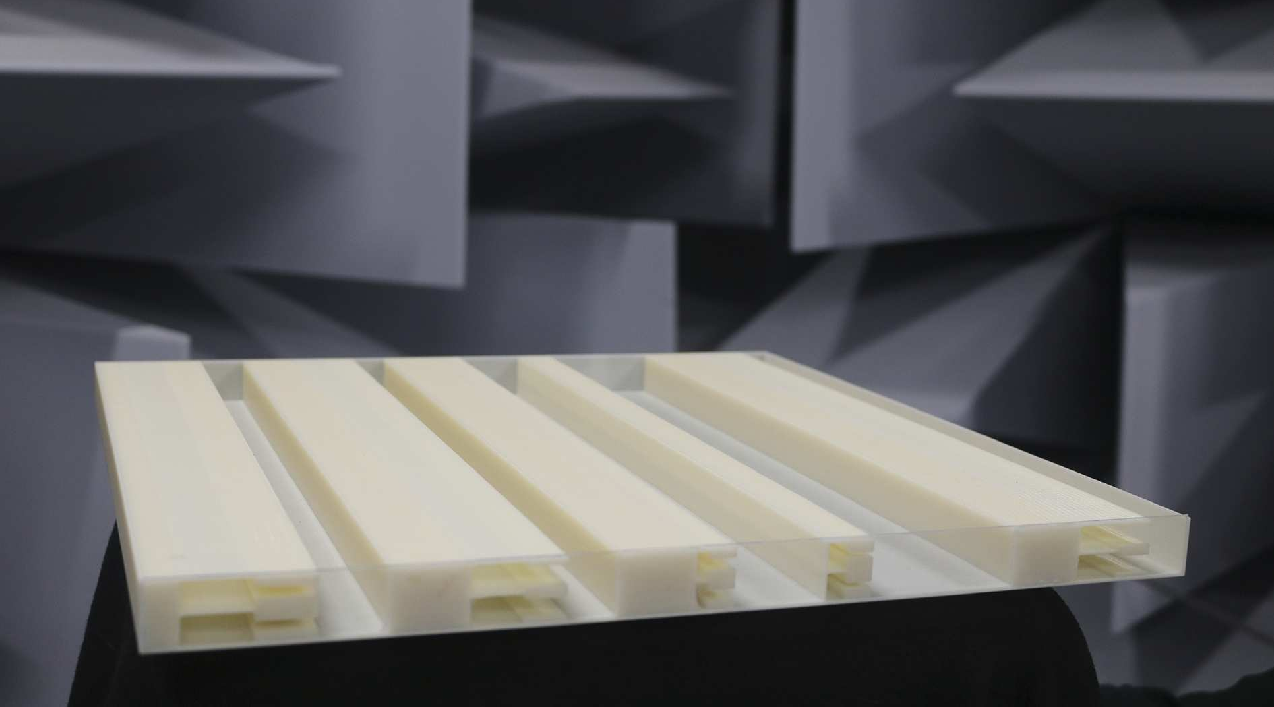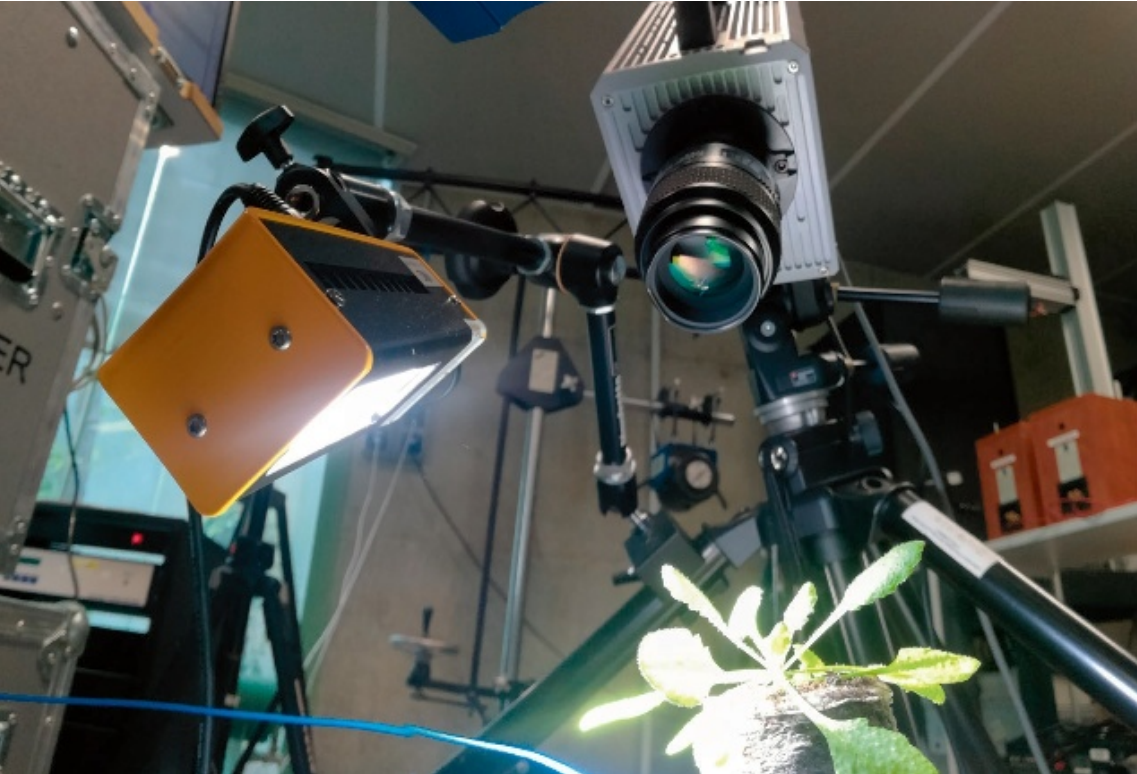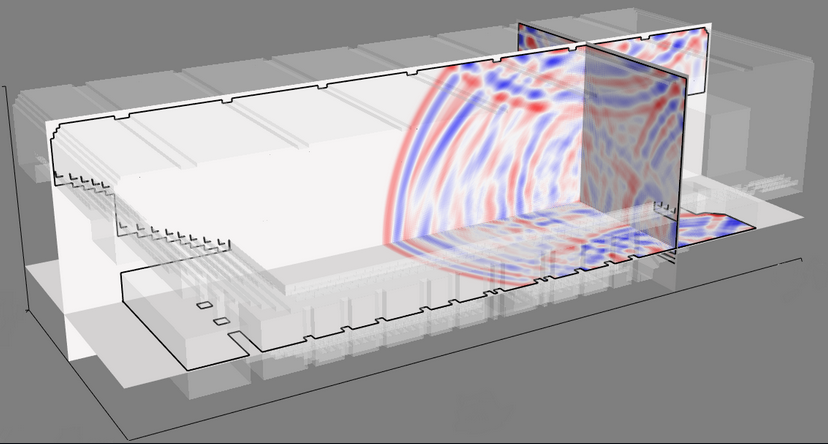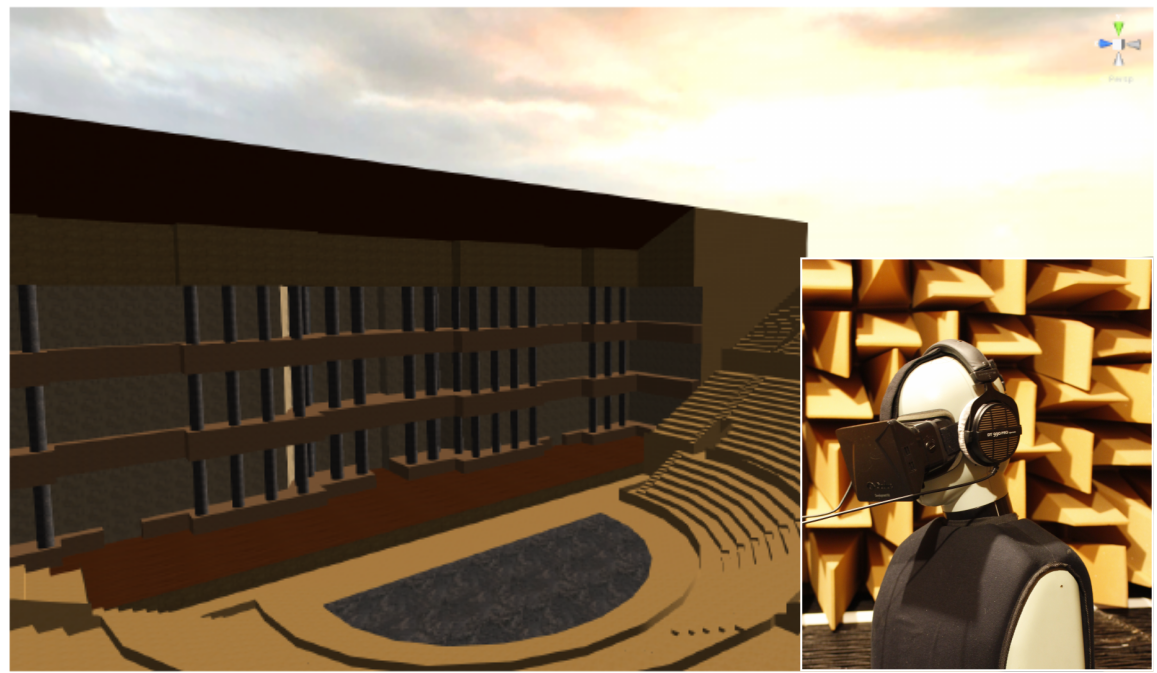Active Research Topics
Acoustic metamaterials & waves in periodic structures

From the Greek “meta” (beyond) and the Latin “materia” (matter, material), a metamaterial is a composite structure that is engineered in a way to obtain extraordinary physical properties compared to typical matter. In other words, they obtain their physical properties from the specific arrangement of the structure elements (at a macroscopic level), rather than from the molecular arrangement of the constituting matter (microscopic level), like the difference in density between foam and plastic. Metamaterials can exhibit non-classical physical properties, such as negative refraction index (inversion of the wave propagation path at an interface) or negative bulk modulus (shrinking of the matter instead of expanding when being compressed). Generally, such structures allow to work with waves that are much larger than the metamaterial elements, resulting in much smaller designs than traditional alternatives.
By affecting the fundamental parameters of wave propagation, acoustic metamaterials can be engineered to transmit, reflect, trap, or amplify mechanical waves at certain frequencies in gas, liquid or solid media. As such, acoustic metamaterials come in a variety of shapes for many wave control applications, going from cloaking to trapping or imaging, with scales ranging from ultrasonic to seismic wavelengths.
Biophysical interactions between plants and sound

The study of sound emission and detection by plants (phytoacoustics) is a recently emerging field of science which aims to understand the acoustic mechanisms involved in a variety of biological processes in plants. Many of such processes concern different evolutionary mechanisms for the plants to survive, adapt and grow within a diverse set of environmental conditions. An important biological process of plants involving sound is that of immune system activation (i.e., thigmoimmunity). The action of sound (airborne or structure-borne) upon the plant can enable the plant’s immune system to fight against biotic threats such as viruses, fungi and herbivory predators, and therefore serves a very important evo- lutionary purpose. A key element in such an important defence mechanism relies on the plant’s ability to detect sound and transmit the necessary acoustic information through a biological communication chain.
The process to react to a mechanical stimulus such as touch, pressure, vibration and sound is termed as mechanoperception, which is achieved through sensory organs called mechanorepectors. Known examples of such ability are the Mimosa pudica or Droseraceae family of carnivorous plants, which retract their leaves/appendices in function of light and/or touch. Many recent biological studies have started to elucidate some questions on how plants can be affected by sound. However, such advances are mainly done from a biologogical perspective, and therefore lack the physical insights from the field of acoustics/mechanics.
Simulation of acoustic waves in complex media

In physics, the description of a phenomenon is usually achieved through a general theoretical formulation that models some sort of dynamic system, e.g., pressure and velocity variations in one or more dimensions in acoustics. Such formulation often takes the form of a Partial Differential Equation (PDE). For the majority of cases, it is dauntingly difficult to use these theoretical formulations to describe the state of the variables in the entire domain considered due to the complexity in the mathematical formulation, which usually describes the variables under consideration through partial derivatives at each point of space and time. Instead, approximations to these equations can be made, simplifying the analytical problem based on a set of assumptions.
One useful approximation is that of discretization, where the space and time continuum are discretized into small and finite elements. Writing the differential equations in a discretized state allows a numerical formulation that can be practically used in order to obtain the values of the dependent variables given a certain set of initial conditions. The nature of the numerical scheme then depends on the discretization method being employed. FEM is one of two most common approaches that are used when numerically solving a PDE in the frequency domain, often compared to its boundary equivalent, the Boundary Element Method (BEM). Of course, other numerical schemes can be designed to work in the time-domain rather than the frequency domain, such as Finite-Difference Time- Domain (FDTD).
Biomedical ultrasound applications

Research in ultrasounds is generally focused around biomedical applications, such as medical imaging and non-invasive controlled medical therapy. These applications can allow (i) to better visualize internal organs to identify with precision therapy targets, e.g., ultrasensitive Doppler imaging (uDoppler) or ultrasound localisation microscopy (ULM), and (ii), to treat such narrow organ regions with non-invasive localized ultrasonic fields, e.g., wave field manipulation with beam steering/focusing which can be combined with High Intensity Focused Ultrasound (HIFU) for heat-induced tissue ablation.
Over the past decades, the use of acoustic holograms, and therefore acoustic lenses, has been a key research element to replace expensive multi-transducer settings and allow even further possibilities in controlling the propagating ultrasonic wavefields, e.g., increasing spatial imaging resolution with compressive wavefield encoding/sensing and/or generating arbitrary ultrasonic fields for complex medical therapies. The idea behind acoustic lenses is that the phase and amplitude distribution of a desired wavefront can be spatially encoded into a monolithic element and then reproduced when the structure is being radiated by a wavefield.
Under construction...
Audio processing of acoustic simulations for interactive media

The ability to create computer models, based on real or imaginary environments, has been evolving at an extraordinarily fast pace for the past decades. Computer Aided Design (CAD) software and new user-machine interfaces have played a major role in developing easier and faster means to build virtual environments with increasing realism. Alongside the latter, computer processing capabilities for undertaking acoustic calculations have been rapidly expanding, allowing faster and more efficient deterministic calculations of the emulated physics’ behaviour inside computer models. In acoustics, we can use computers to calculate how the sound propagates in an environment, an information which can then be manipulated in order to reproduce the sensation of hearing inside any given scenary.
Nowadays, the technique being commonly used to prospectively share the hypothetical auditory sensation of some acoustic space is called auralisation, i.e., the process of rendering audio data through binaural synthesis by digital means to achieve a virtual reconstruction of the sound field at a given position. Tools such as video game engines and Virtual Reality (VR) can be incredibly useful in processing the information and delivering it in a realistic fashion.
Under construction...
Dissemination of scientific knowledge

Knowledge dissemination is an important part of the scientific endeavour. This activity can take many forms: workshops, seminars, videos, exhibitions, etc. The main objective is to synthesise the state-of-the-art research and accumulated knwoledge in one or many scientific fields and deliver it to a general public, i.e., schools, towns, journal channels, or other scientific peers which might not be proficient on the specific topic being disseminated. Research would not be very useful process if it stayed into a researcher's book!
Under construction...